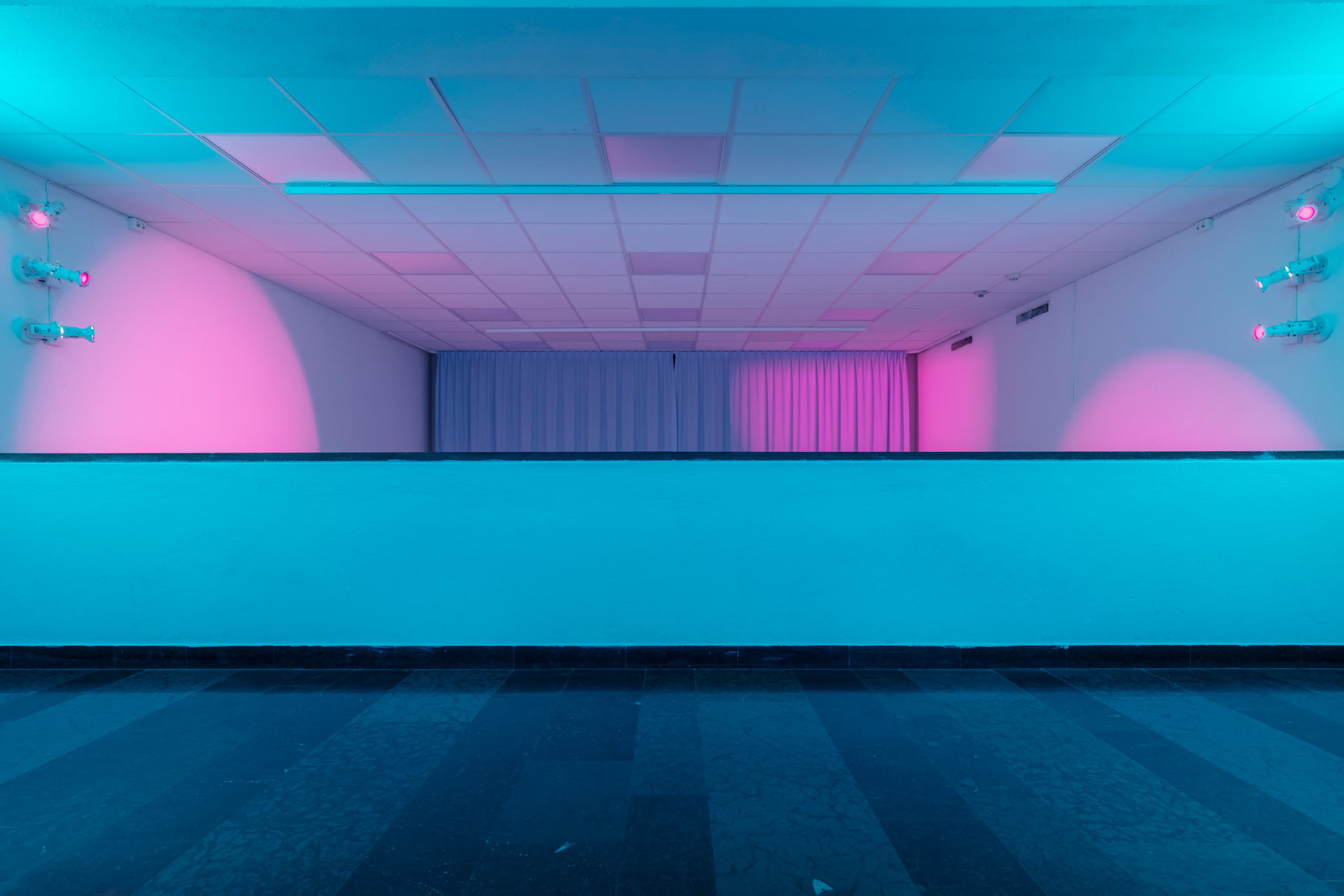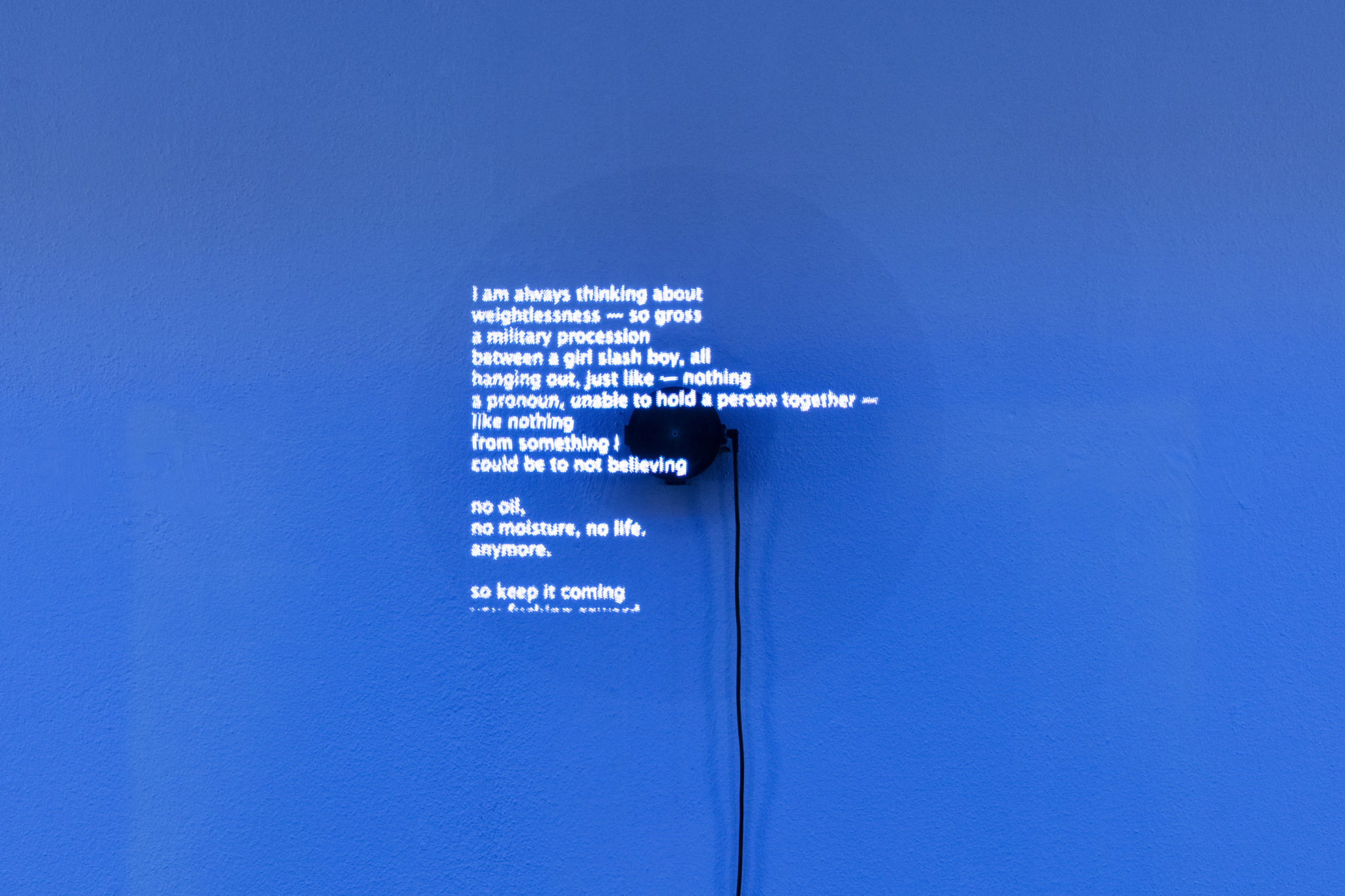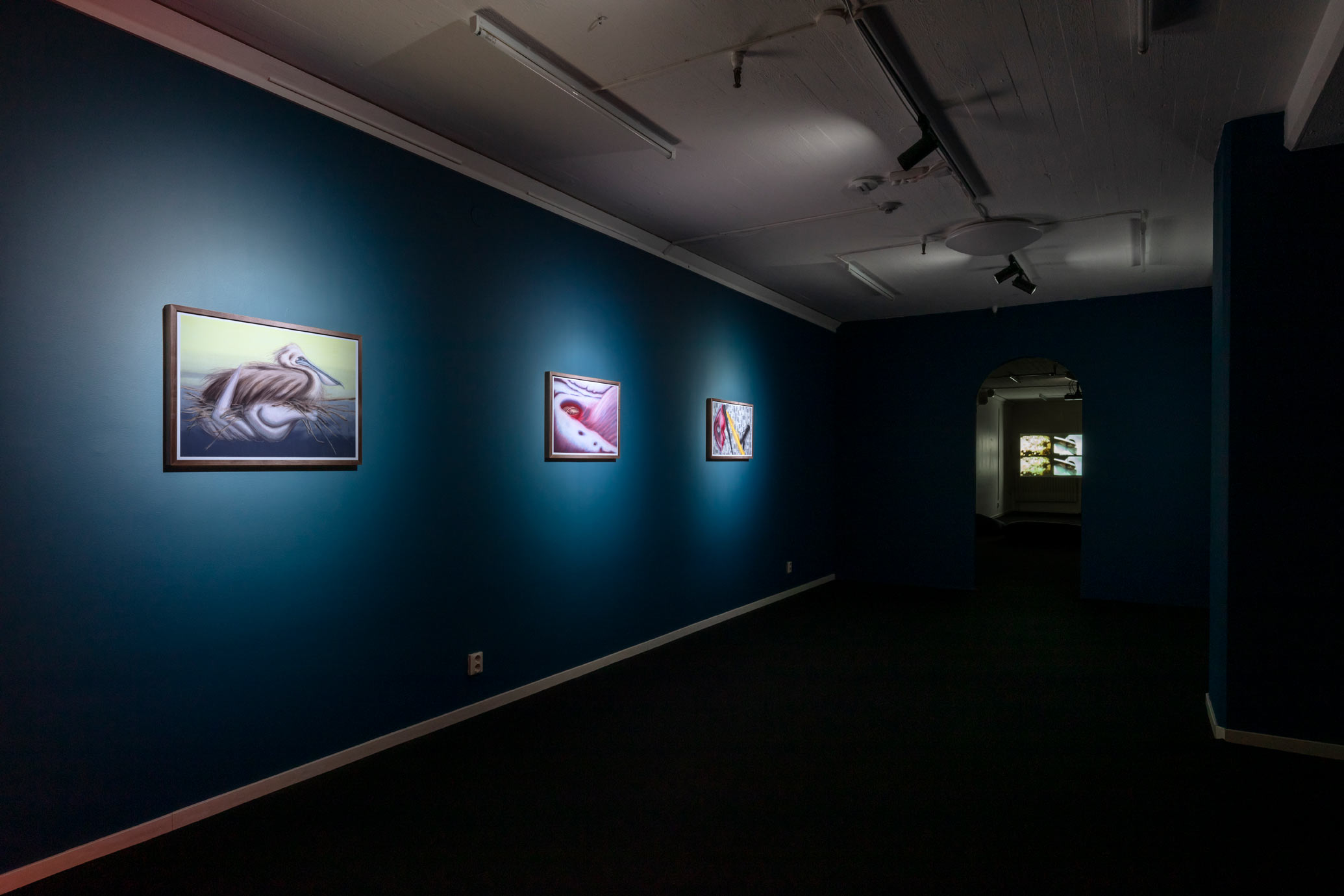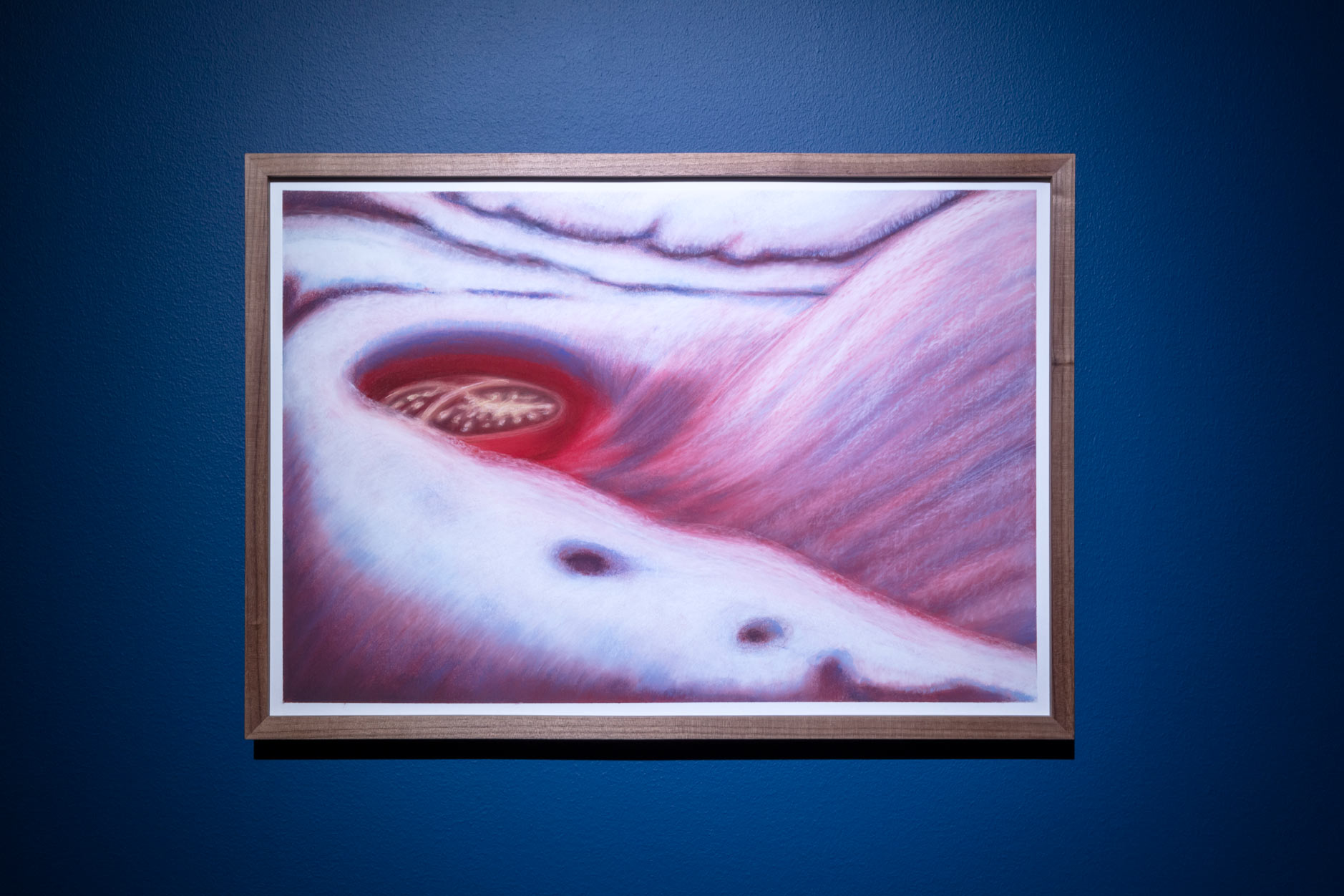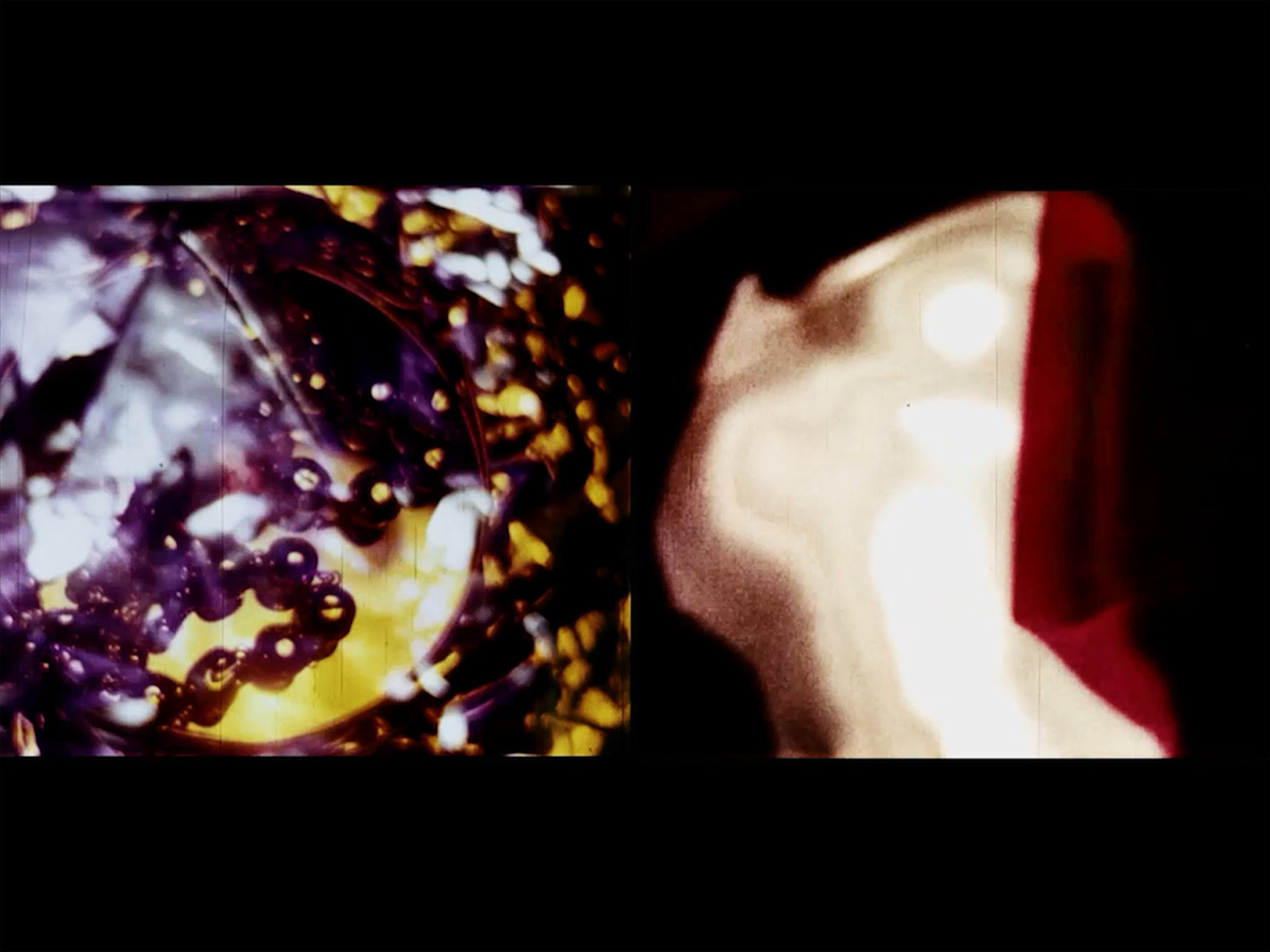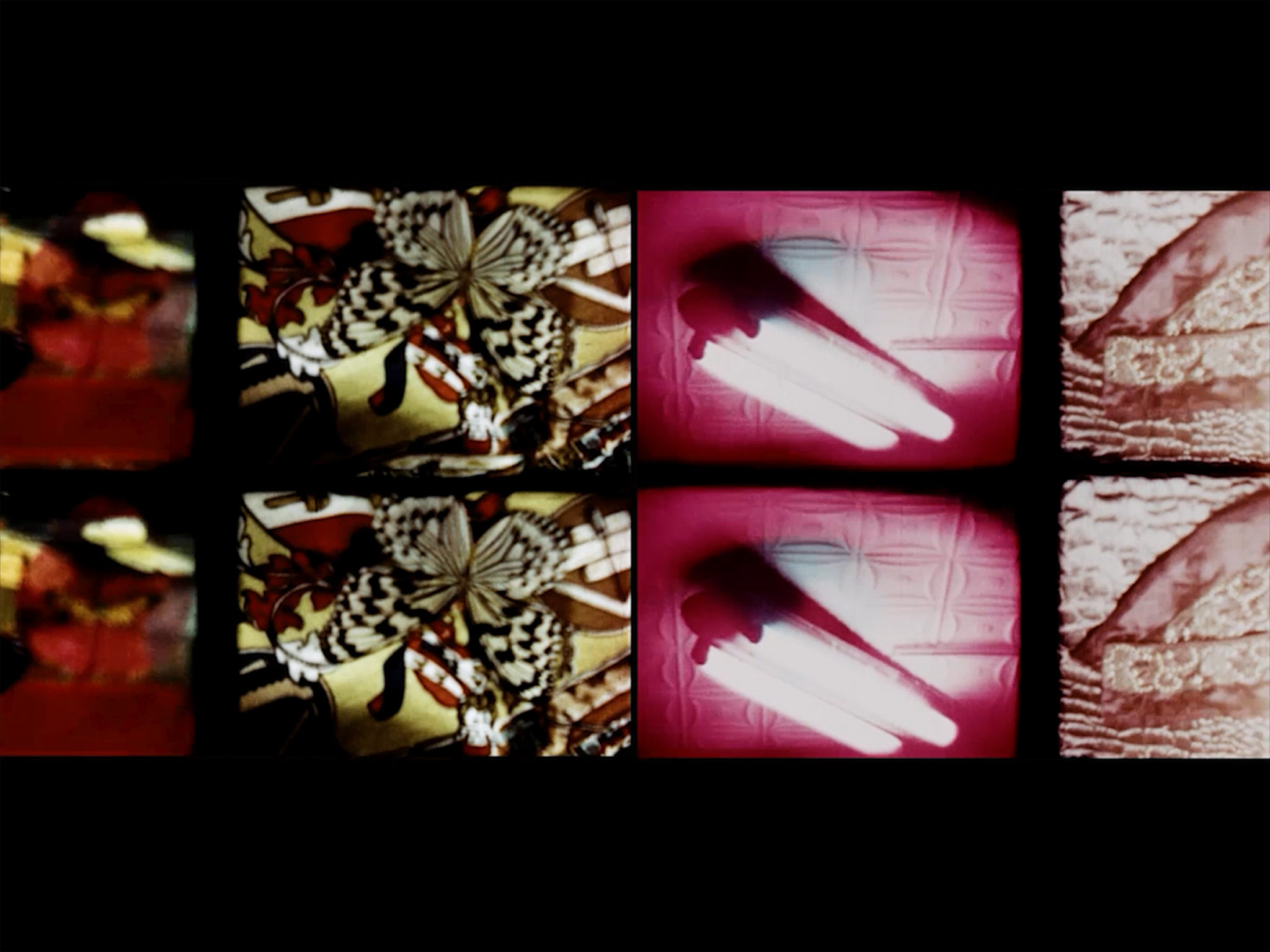Storm de Hirsch
Nat Marcus
Luzie Meyer
Sofia Restorp
P Staff
1.12 2022–18.02 2023
Mint, ABF Stockholm, Sveavägen 41, Stockholm
The film Third Eye Butterfly (1968) which lends the exhibition its title, is a result of multiple visual experiments inspired by the diverse range of colorful and abstract butterfly wing patterns. Kaleidoscopic shots and superimpositions come and go in the image, in tune with the soundtrack’s repetitive scheme, it appears as an attempt to translate the multi-color effect of butterfly wings into an expanded film experience. Intended to be projected on a double screen using two synchronized projectors, the film creates the illusion of seeing two butterfly wings animated by the flicker of the projected images. An eye, “the great Eye,” appears several times in the center of an endless spiral framed by the words “Third Eye Butterfly.” On this matter, the American theorist Casey Chanress explains that “the 70mm like effect of Third Eye Butterfly encourages the mind to work as a third eye by fusing the two side-by-side screens into a third meaning, just as Eisenstein caused the meaning of two juxtaposed shots to result in a third implied meaning.”
By using rhythmized imagery that incorporates colors, stenciled shapes, and sound into an audiovisual continuum, de Hirsch evokes an experience which relies on the interrelationship of sensory modalities. Following this idea of a multilayered perception of the world and tracing the interconnectedness of language, music and film young international artists Nat Marcus (lives and works in Berlin), Luzie Meyer (1990, lives and works in Berlin), Sofia Restorp (1986, lives and works in Berlin) and P Staff (1987, lives and work in Los Angeles and London) were invited.
The idea of being transported into other states of reality emphasized by the pieces present in the show continues in the design of the conventional exhibition space of Mint and is characterized by the work of lighting designer Ines Bartl. Together with the curator, she came up with a concept for the corridors and places of transition for the light situations inspired by the color spectrum from Third Eye Butterfly.
In the exhibition, not only light is used to mark the places of transition, but also the medium of language emerges through various works to describe transformative processes: the audio work Period Piece (2021) by Luzie Meyer for example playfully explores the manifold meaning of the word period that is used to describe how bodies, language and time are regulated. Similar to Meyer’s work, Nat Marcus who produced two new fabric pieces The Velvet Sound (I) and The Velvet Sound (II) (2022) which on their surface are layering graphics, paint and text as well as P. Staff’s poems displayed on hologram fans, engage the idea of multiple, fluid meanings of words to talk about bodies that encounter themselves in transitory states. Sofia Restorp’s newly created drawings, on the other hand, return to a purely visual world, but are thoroughly poetic due to the ambiguous surrealistic interiors that are depicted. Rather than dwelling on the surface her pieces can be characterized by the idea of a reflective looking inward.
Third Eye Butterfly can be seen as an attempt to reflect on Storm de Hirsch’s psychedelic view of the world and how surpassing common notions of what reality is, is more relevant than ever to artists working in the here and now.
Curator: Cathrin Mayer
Cathrin Mayer (b. 1988 Vienna) is currently the associate curator at HALLE FÜR KUNST Steiermark (Graz, AT). Until 2020, she was curator at KW Institute for Contemporary Art in Berlin. In addition to her curatorial work, she teaches regularly and is holding a guest professorship for curatorial studies at The University of Art and Design Linz (AT).

